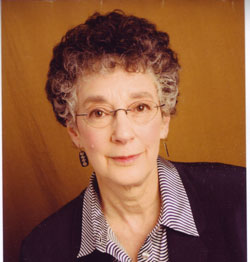 |
The International Association for Relational Psychoanalysis and Psychotherapy |
|
|
|
Write On! An Advice Column for Writers: Capture & Challenge By Suzi Naiburg
Some of our most creative thoughts arrive when we’re not looking for them and might be doing something completely unrelated. Creativity expert Robert Epstein identifies “capturing” as an essential strategy for developing creativity, because if we’re unprepared to catch new ideas as they fly by, we might lose track of them. “Challenging” ourselves is another strategy we can cultivate. It increases the probability that we will generate something novel. When old patterns fail, we are challenged to create new options. Let me suggest you read through this column even if you can’t take the time to try the exercises right away. Let your mind play with one whenever you have a little time and space. Before you sit down to write, you might discover an idea has emerged in a small opening. For good measure, you might want to plan a way to capture your ideas when they surprise you or when you are doing something else. If an exercise requires you to stretch, think of the challenge as a bonus rather than a workout. Enjoy and write on! Portraits in a Sentence
Creating Momentum in a Few Lines
Why does Havens’ narrator question his patient’s response? What does he notice and what will he tell us? In a self-reflective voice, Havens quietly introduces his own doubt to unsettle the certainly his patient presents. With only two sentences, Havens propels his readers into his narrative in search of understanding.
Something is about to happen. But what? Grand’s first sentence is short and matter of fact. Her second is richly textured and unfolds luxuriously, playing on the trope of personification and suggesting more than she reveals. The structure of her sentences establishes one contrast. She creates another by endowing the inanimate environment with human qualities in contrast to the nonhuman self of her title, implying a world turned upside down. What stories will fill her office now? Notice how the following leads grab your attention:
In this exercise, see if you can stimulate your readers’ curiosity in a couple of sentences by describing something about a patient, your office, an interaction, or idea that creates a need for your readers to know more. You may want to play on contrast, create suspense, unsettle expectations, use a self-reflective voice, or present a puzzle that needs to be solved. Once you have the nugget of an idea for such an opening, try experimenting with the sentence structure and figures of speech to enact meaning or create surprise that is experienced in the act of reading.
In the next issue of the eNEWS, the editors would like to publish a selection of IARPP members’ responses to these exercises—pillow thoughts and otherwise—so please send yours in both your first language and in English to sallyrudoy@gmail.com by February 25, 2013 |
|

 Suzi has been teaching clinical writing workshops and coaching writers for more than 15 years. Her book, Structure and Spontaneity in Clinical Prose: A Writer’s Guide for Psychoanalysts and Psychotherapists, will be published by Routledge in 2013. She also has a private practice in psychoanalysis and psychotherapy.
Suzi has been teaching clinical writing workshops and coaching writers for more than 15 years. Her book, Structure and Spontaneity in Clinical Prose: A Writer’s Guide for Psychoanalysts and Psychotherapists, will be published by Routledge in 2013. She also has a private practice in psychoanalysis and psychotherapy.